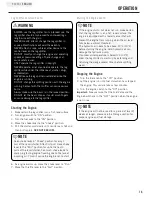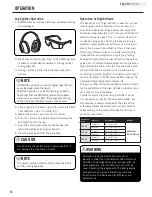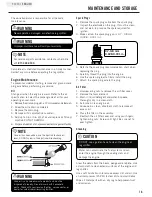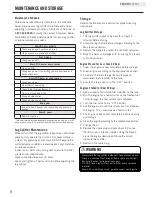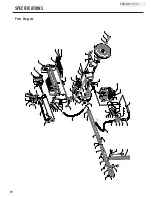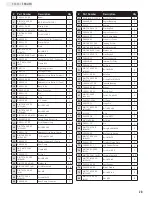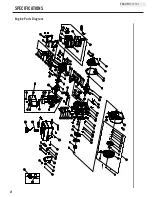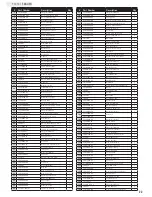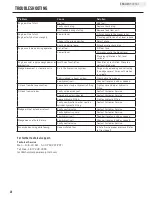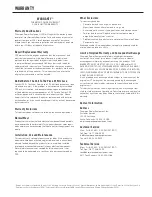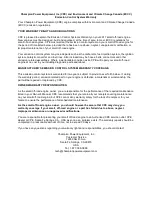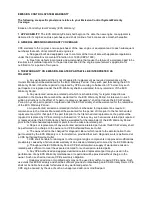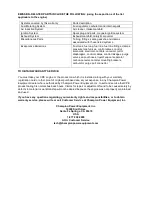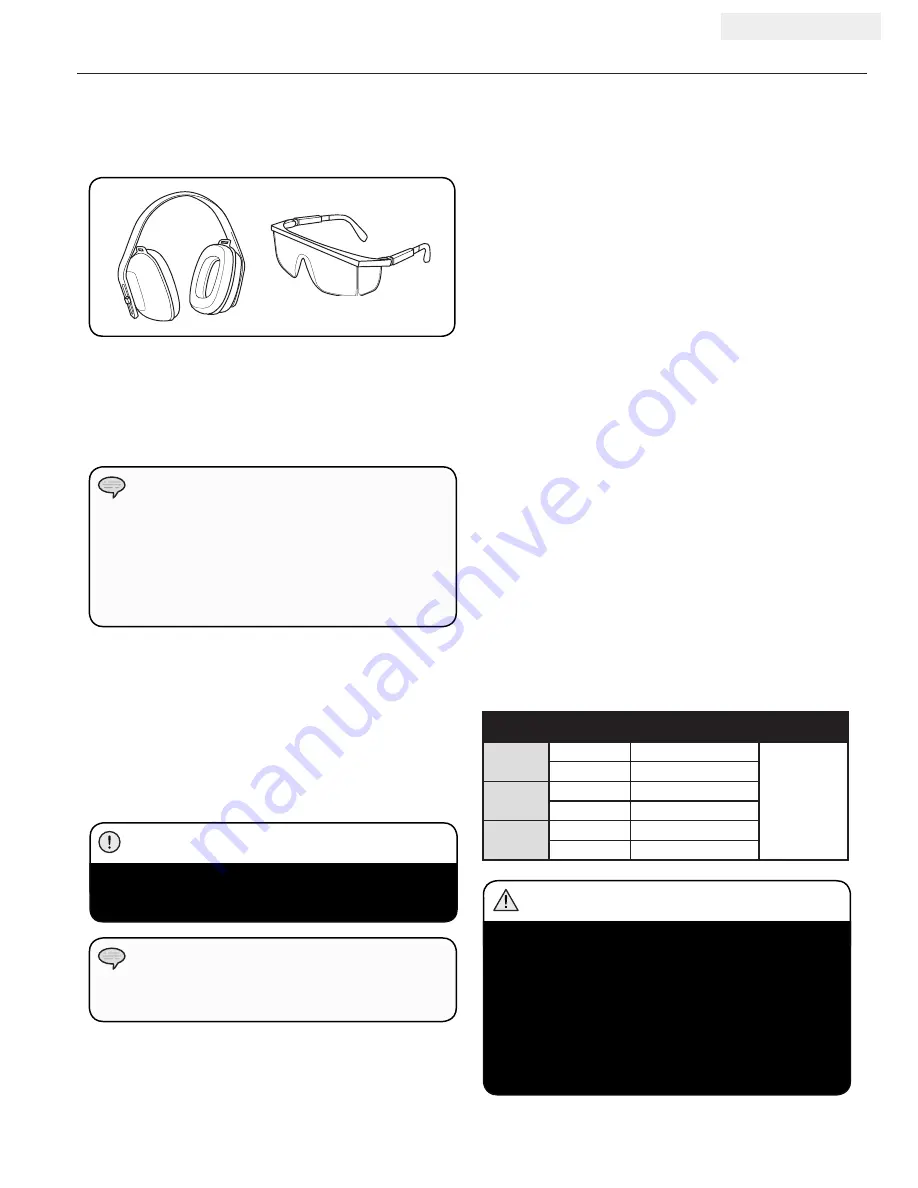
15
ENGLISH
92050-1
OPERATION
HORIZONAL position is used for lighter logs that can
easily be loaded onto the beam.
VERTICAL position is used for light logs as well as
heavy logs that are difficult to load onto the beam.
Back injury can result from lifting logs onto the log
splitter if proper lifting techniques are not used.
NOTE
It is normal for the hydraulic fluid to become foamy
or frothy during operation.
NOTE
Log Splitter Operation
1. ALWAYS wear ear and eye protection, protective clothing
and safety gear.
2. Block tires and put support leg in the DOWN position
to prevent unintended movement of the log splitter
during operation.
3. Set log splitter in either the horizontal or vertical
position.
4. Load a log onto the beam against the end plate (MAX
LOG LENGTH – 60.3 cm {23.8 in.}).
5. Make sure all limbs are clear of crush zones.
6. Push the control valve handle forward (towards the
end plate) to split the log.
7. Push the auto control valve handle backward to
return the wedge to its original position.
8. Clear the split wood from the work zone.
Do not hold auto control valve in return position. It
will damage the stop block or beam.
CAUTION
Operation at High Altitude
The density of air at high altitude is lower than at sea
level. Engine power is reduced as the air mass and
air-fuel ratio decrease. Engine power and output will
be reduced approximately 3
½
% for every 1000 feet of
elevation above sea level. This is a natural trend and
cannot be changed by adjusting the engine. At high
altitudes increased exhaust emissions can also result
due to the increased enrichment of the air fuel ratio.
Other high altitude issues can include hard starting,
increased fuel consumption and spark plug fouling.
To alleviate high altitude issues other than the natural
power loss, Champion Power Equipment can provide a
high altitude carburetor main jet. The alternative main
jet and installation instructions can be obtained by
contacting Customer Support. Installation instructions
are also available in the Technical Bulletin area of the
Champion Power Equipment internet site.
The part number and recommended minimum altitude
for the application of the high altitude carburetor main
jet is listed in the table below.
In order to select the correct high altitude main jet
it is necessary to identify the carburetor model. For
this purpose, a code is stamped on the side of the
carburetor. Select the correct main jet part number
corresponding to the carburetor code found on your
particular carburetor.
Operation using the alternative main jet at
elevations lower than the recommended minimum
altitude can damage the engine. For operation at
lower elevations, the standard main jet must be
used. Operating the engine with the wrong engine
configuration at a given altitude may increase
its emissions and decrease fuel efficiency and
performance.
WARNING
Carburetor
Code
Main Jet
Part Number
Altitude
P19-1-Z
Standard
26.131017.00.Z
3500 Feet
(1067 Meters)
Altitude
26.131017.00.01.Z
P19-1-H
Standard
26.131017.00.H
Altitude
26.131017.00.01.H
P19-1-Y
Standard
26.131017.00.Y
Altitude
26.131017.00.01.Y














